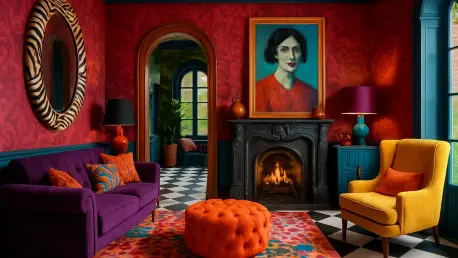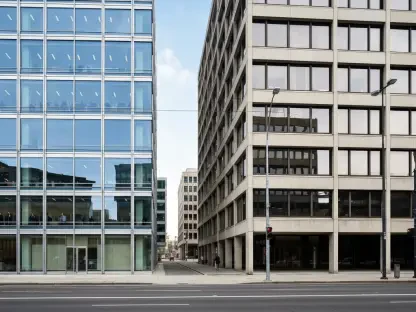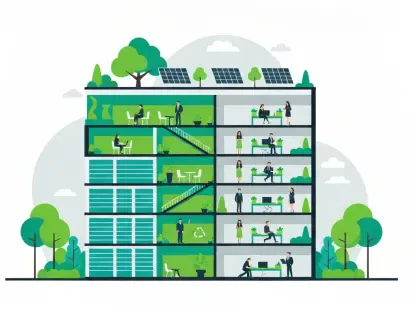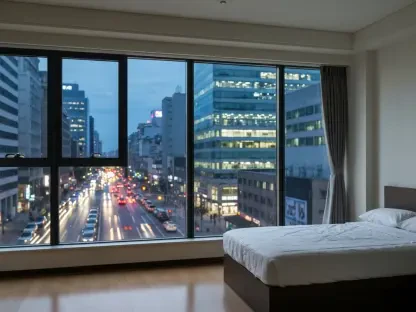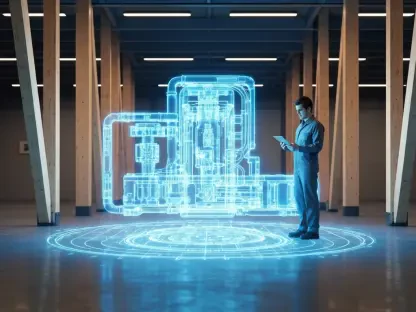In an era where personal expression is becoming a cornerstone of daily life, home design is witnessing a dramatic shift toward a style that bursts with color, texture, and individuality, captivating homeowners across the globe. Maximalism, a trend rooted in the exuberant 1980s, has reemerged as a powerful force in interior spaces, captivating homeowners with its unapologetic boldness. Far from the restrained, neutral palettes that have dominated for years, this approach invites an abundance of patterns, vibrant hues, and curated treasures that tell personal stories. It’s a rebellion against the minimalist wave that prioritized function over flair, offering instead a canvas for creativity and emotional resonance. As living spaces evolve beyond mere utility, there’s a growing curiosity about whether this daring aesthetic represents the next chapter in design. This resurgence reflects not just a stylistic preference but a cultural pivot toward spaces that feel uniquely personal, sparking intrigue about its potential to redefine homes for years to come.
A Revival Rooted in Expression
Maximalism’s return to prominence marks a significant departure from the minimalist ethos that shaped interiors for over a decade, emphasizing simplicity and decluttered spaces. This trend, originally celebrated in the 1980s for its “more is more” philosophy, now captivates a new generation seeking to infuse their homes with personality. Unlike its earlier chaotic iterations filled with clashing patterns and unchecked excess, today’s version is more thoughtful, focusing on intentional selections that resonate deeply with the homeowner. Think bold color palettes of rich reds and golden yellows paired with vintage finds or handcrafted pieces that speak to heritage and sustainability. The result is a space that feels alive, brimming with layers of meaning through statement furniture, textured fabrics, and unexpected decor choices. This evolution showcases a desire to move beyond sterile environments, embracing homes as galleries of lived experiences rather than mere functional zones, setting a vibrant tone for modern living.
Another dimension of this revival lies in how maximalism empowers homeowners to break free from design conformity and experiment with fearless creativity. Social media platforms have played a pivotal role in amplifying this trend, as visually striking interiors filled with intricate details often garner significant engagement online compared to pared-down aesthetics. The ability to mix and match diverse elements—like patterned upholstery with artisanal wall hangings—offers endless possibilities for customization. Moreover, the integration of culturally significant items or family heirlooms adds a layer of storytelling that minimalist designs often lack. This approach isn’t about clutter but about crafting a cohesive narrative through curated abundance, where every object holds purpose or sentiment. As a result, living spaces transform into reflections of individual journeys, resonating with a broader movement toward diversity and self-expression in design that feels both timely and refreshing.
Driving Forces Behind the Trend
The resurgence of maximalism isn’t merely a nostalgic whim but a response to deeper societal shifts that have reshaped perceptions of home environments. After years of prioritizing practicality—especially during times when homes doubled as offices and classrooms—there’s a palpable hunger for spaces that inspire joy and individuality. This shift mirrors the cyclical nature of design trends, much like fashion, where past styles are revisited with contemporary twists. The move away from minimalism also stems from a collective desire to reclaim personal spaces as sanctuaries of self-expression rather than utilitarian hubs. Vibrant decor, layered textures, and bold choices like innovative lighting or mixed-material furniture become tools to redefine what a home can be. Industry insights suggest this trend will maintain momentum through at least 2026, driven by its adaptability to blend with other emerging styles like biophilic elements that bring nature indoors.
Beyond cultural shifts, technology and digital influence have significantly fueled maximalism’s popularity among design enthusiasts and casual homeowners alike. Platforms such as Instagram and TikTok serve as virtual galleries where eclectic, detail-rich interiors capture widespread attention, inspiring others to experiment with similar aesthetics. Unlike minimalist designs that can appear uniform online, maximalist spaces stand out with their unique combinations of color and texture, often sparking viral trends. Additionally, the accessibility of online marketplaces allows for sourcing one-of-a-kind pieces, from vintage decor to artisanal crafts, making it easier to build personalized collections. This digital ecosystem not only democratizes design inspiration but also fosters a community of creators sharing tips on balancing boldness with harmony. The trend’s visibility and versatility position it as a dominant force, encouraging a broader audience to embrace living spaces that defy conventional restraint.
The Lasting Impact of Bold Design
Reflecting on maximalism’s journey, it’s evident that its comeback captured a collective yearning for vibrancy after years of muted, functional decor. What started as a nostalgic nod to the 1980s evolved into a refined movement that balanced audacity with purpose, evident in carefully chosen elements that told intimate stories. Designers and homeowners alike gravitated toward rich hues and tactile layers, crafting environments that felt distinctly personal. The trend’s strength lay in its adaptability, seamlessly merging with natural motifs and cultural artifacts to create spaces that were as diverse as their creators. Social media’s role in amplifying these bold aesthetics cannot be overstated, as it turned individual homes into shared inspiration. Looking back, maximalism redefined how living spaces were perceived, shifting the focus from mere utility to emotional resonance, leaving an indelible mark on design philosophy.
Moving forward, the challenge lies in sustaining this momentum by encouraging thoughtful integration over haphazard excess in home styling. Designers should prioritize guiding homeowners to select pieces that align with personal narratives while maintaining visual balance, ensuring spaces remain inviting rather than overwhelming. Exploring ways to incorporate sustainable materials can further elevate the trend, aligning it with growing environmental consciousness. As new design movements emerge, blending maximalism with complementary styles like warm wood tones or nature-inspired elements could offer fresh perspectives. Homeowners are encouraged to view their spaces as evolving canvases, where bold choices coexist with intentionality. By fostering a dialogue between creativity and restraint, the legacy of this vibrant aesthetic can continue to inspire, shaping environments that celebrate individuality while adapting to future sensibilities in the ever-changing world of interior design.
